Longhorns, BBQ, and – hawks? That’s right; Texas is home to a wide variety of wildlife, including many different types of hawks. Whether they live there year-round or just pass through on their way south, hawks are plentiful in this large state.
Ready to meet the different types of hawks in Texas? Keep reading!
Swainson’s Hawk
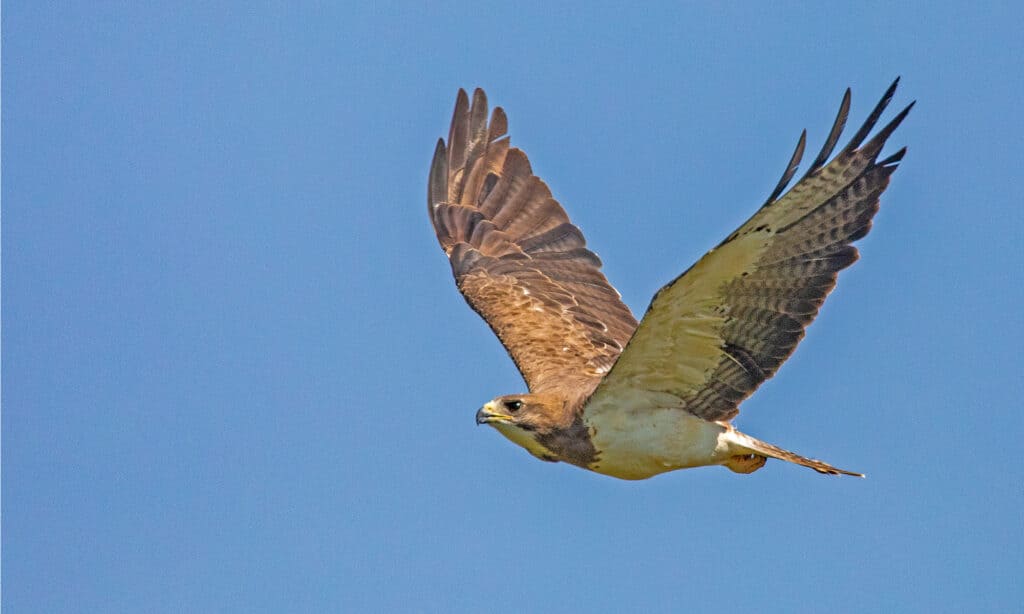
Swainson’s hawk is a large type of hawk in Texas.
©Lowell Monke/Shutterstock.com
| Scientific Name | Buteo swainsoni |
| Weight | 1.8 – 2.5 pounds |
| Length | 18 – 22 inches |
| Wingspan | Around 48 inches |
If you haven’t heard of Swainson’s hawk before, it may be because you know them by their other two names: the grasshopper hawk and the locust hawk. This type of hawk in Texas has earned this name from its special diet. Although they’re anything but picky (as most hawks tend to be), they do have one favorite food: grasshoppers. Swainson’s hawks will eat grasshoppers whenever they are available, even though they may also eat other foods like mammals, small rodents, and reptiles.
To identify these birds, it’s best to look at their size. While most hawks are rather large birds, especially compared to the songbirds you might be used to, Swainson’s hawk is notably larger than some of its bird of prey cousins. They also have dark bodies with light bellies, making them easy to pinpoint in the Texan sky.
Swainson’s hawk is a migratory type of bird. In fact, they’re known as raptors that migrate the longest distances each year, with some traveling as far south as Argentina in South America. However, this bird of prey only makes this trip when the temperatures start to drop. Throughout the rest of the year, they’re one of many types of hawks in Texas.
Sharp-shinned Hawk
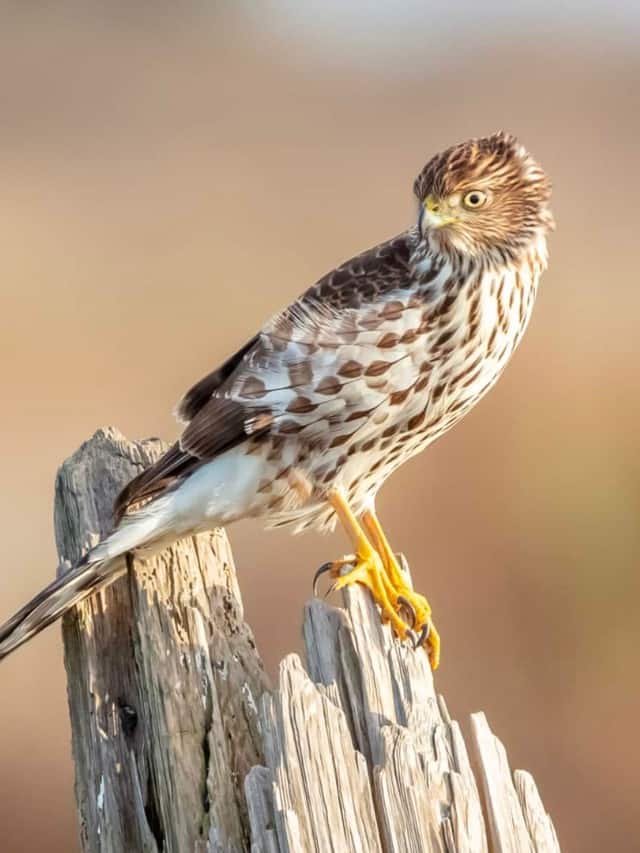
The sharp-shinned hawk is often mistaken for Cooper’s hawk.
©Pierre Leclerc/Shutterstock.com
| Scientific Name | Accipiter striatus |
| Weight | 2.9 – 7.7 ounces |
| Length | 9 to 15 inches |
| Wingspan | 17 to 26 inches |
While Swainson’s hawk is one of the largest types of hawks in Texas, the sharp-shinned hawk is the smallest. In fact, the sharp-shinned hawk is considered to be the smallest hawk in all of the United States, weighing just a few ounces at their largest.
There are around 10 subspecies of the sharp-shinned hawk in the western hemisphere of the world. Although many of them tend to stay small, some species are larger. Those in South America are larger than those in the United States.
When it comes to identification, it can sometimes be difficult to tell the difference between sharp-shinned hawks and Cooper’s hawk. Since these are both types of hawks in Texas, it can make birding difficult to navigate. Thankfully, however, there are a few key indicators – aside from size – to help you tell who’s who.
The best way to tell the difference between these two types of hawks in Texas is to take a look at their bellies. Although both have light chests with dark markings, Cooper’s hawk is more rust-colored while the sharp-shinned hawk is darker with brown markings.
The sharp-shinned hawk also has a unique way of hunting its food. Because it is so small, it can’t rely on speed and strength like other types of hawks in Texas can. However, it is still a top predator known for eating a widely varying diet that even includes other, smaller birds. The sharp-shinned hawk is able to pull this off by utilizing its surroundings. It will hide in bushes and overgrown areas in order to ambush its prey, using the element of surprise to land its next meal.
Cooper’s Hawk
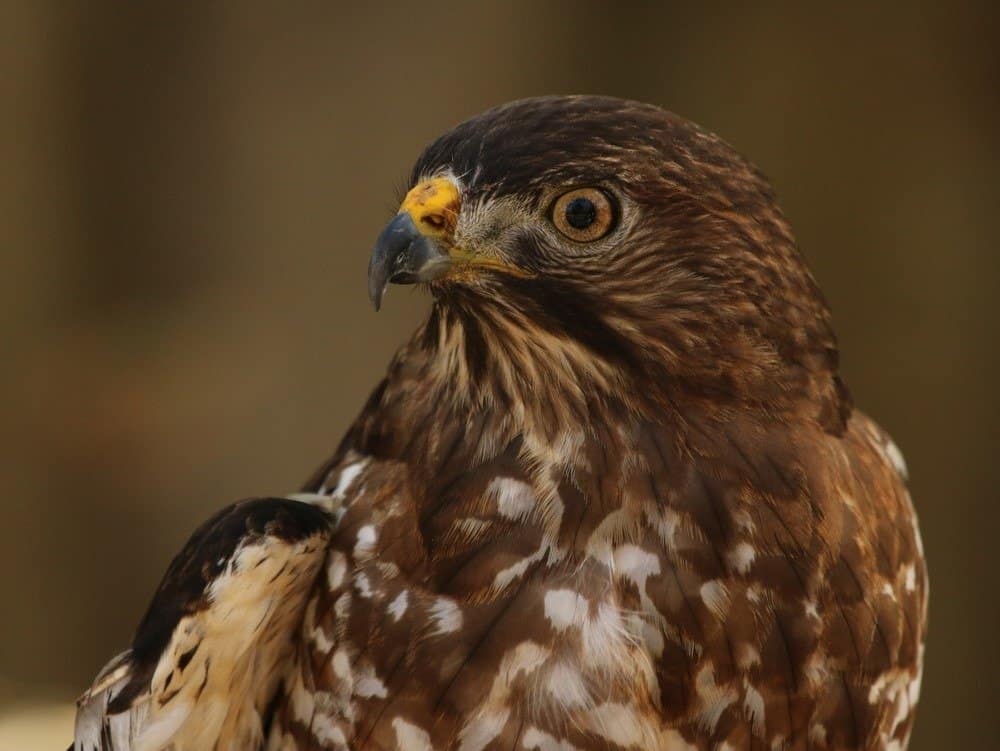
Cooper’s hawk has many different types of names.
©Julie rubacha/Shutterstock.com
| Scientific Name | Accipiter cooperii |
| Weight | 1-2 pounds |
| Length | 14 – 20 inches |
| Wingspan | 29 – 37 inches |
Cooper’s hawk is an average-sized hawk native to North America. While there tend to be only one main species of Cooper’s hawk found, there are some variations. For instance, individuals found east of the Mississippi River are typically larger than western Cooper’s hawks. They have a large diet, eating up to 300 different types of species of mammals, reptiles, insects, amphibians, and more. If you don’t recognize the name “Cooper’s hawk,” you may know one of their many other names, including:
- Big blue darter
- Chicken hawk
- Flying cross
- Hen hawk
- Quail hawk
- Striker
- Swift hawk.
Despite being a thriving species today, Cooper’s hawk had a tough past. In the early 19th century, they were considered so numerous that individuals were encouraged to hunt down these birds of prey. Pollution and loss of habitat also played a large role in the decline of this species. However, their general hardiness and conservation acts have helped Cooper’s hawk to become one of the most common types of hawks in Texas with a healthy population.
Zone-tailed Hawk
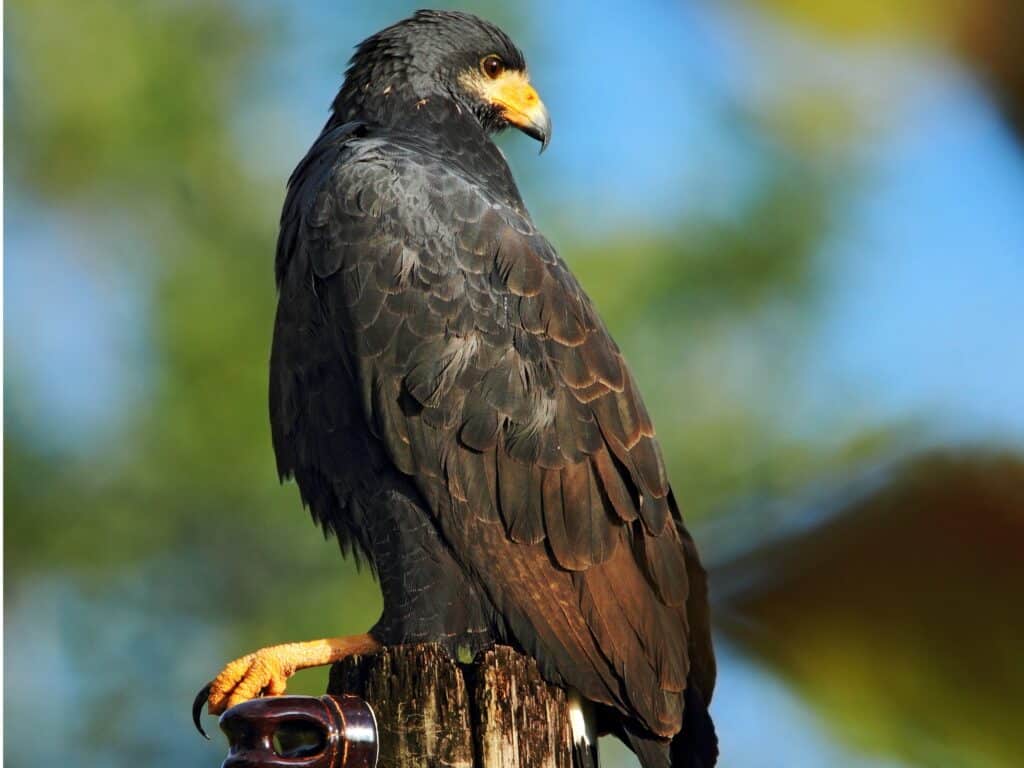
Zone-tailed hawks have a unique appearance.
©iStock.com/Ondrej Prosicky
| Scientific Name | Buteo albonotatus |
| Weight | 21 – 33 ounces |
| Length | 17 – 22 inches |
| Wingspan | 46 – 55 inches |
From their appearance to their flying style, the zone-tailed hawk is easily mistaken for a turkey vulture. However, this Texan hawk is unique in its own way. If you’re struggling to tell the difference between the zone-tailed hawk and a turkey vulture, make sure to pay attention to the markings. The zone-tailed hawk is known for the light bands and markings on its tail and feathers.
Capable of thriving in dry, arid locations, the zone-tailed hawk is one of the more common types of hawk found in the southwestern United States. This also means that they’re one of many common types of hawks in Texas. One of the largest types of hawks, they have a diverse diet and are adept hunters in the air.
Red-Tailed Hawk
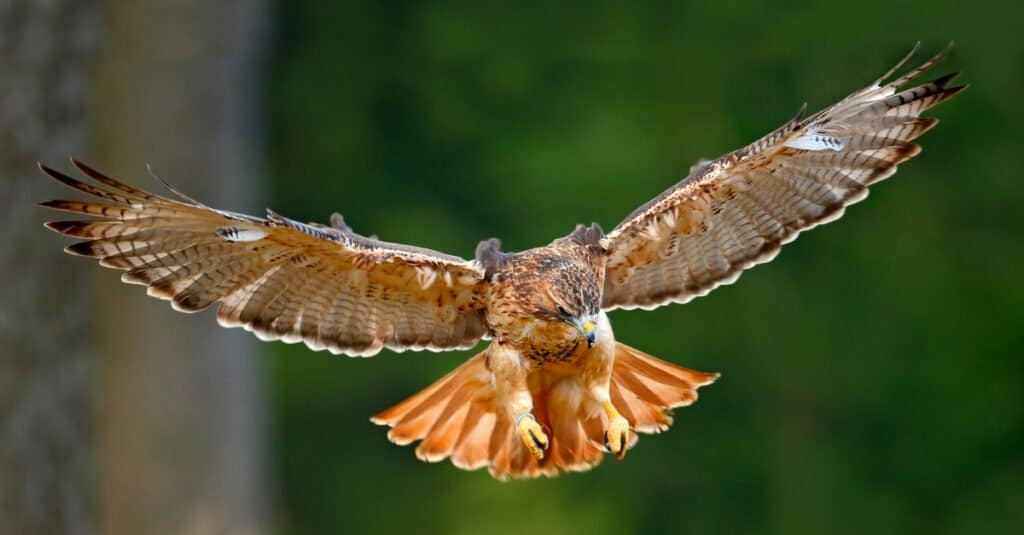
Red-tailed hawks are named for their appearance.
©Ondrej Prosicky/Shutterstock.com
| Scientific Name | Buteo jamaicensis |
| Weight | 2-3.5 pounds |
| Length | 18 – 26 inches |
| Wingspan | 40 – 55 inches |
The red-tailed hawk is one of the most common birds in North and South America. From Alaska to Panama, red-tailed hawks can be found almost everywhere in the western hemisphere. As a result, it’s no surprise that they’re also a common type of hawk in Texas. They can be found here year-round, although their population increases during the winter months when many of the northern populations move south to escape the colder weather.
Red-tailed hawks are also considered fairly aggressive. While they won’t go out of their ways to harm humans, they do make sure their claims are known. Mothers are highly protective of their offspring, and males are known to fiercely defend their territories from other birds of prey. On top of this, these hawks are also top hunters. In Texas, they eat a wide variety of prey, from rabbits to reptiles and even other birds. However, they tend to only hunt in a single area, usually no more than around half a square mile to two square miles. This keeps them from running into each other’s territories.
Red-tailed hawks can easily be mistaken for other types of hawks in Texas and around the country. One of the most common mistaken identities is the red-shouldered hawk. If you’re looking to tell which is which, make sure to pay attention to the red-tailed hawk’s size and coloration. They’re a rather large species, larger than the red-shouldered hawk, and rather than rust markings on their bellies, they have a dark brown band.
There are around fourteen subspecies of red-tailed hawks. Due to their migratory patterns, you may be able to spot several different subspecies in Texas, depending on the area and time of year.
Northern Harrier

Northern harriers have a flat face to help their hearing – just like owls!
©Harry Collins Photography/Shutterstock.com
| Scientific Name | Circus hudsonius |
| Weight | 11-27 oz |
| Length | 16 to 20 inches |
| Wingspan | 41 to 46 inches |
The northern harrier isn’t a common sight in Texas. This is because it thrives in milder climates and, as its name suggests, it prefers to live in the northern regions of the country. However, like most other species of birds, including many of the other types of hawks in Texas, the northern harrier will migrate in the winter. This means that if you happen to go birding in the colder months, you may just see a norther harrier mingling with the other types of hawks in Texas.
Aside from that, the northern harrier is probably one of the most unique hawks you’ll see. That’s because, at first glance, you may not even realize they are hawks! Instead, the northern harrier has a flat face designed to boost their hearing. This gives them a very similar appearance to many types of owls, who you may mistake them for at first.
One mistake you don’t need to worry about, however, is telling the difference between male and females northern harriers. When you look at most of the types of hawks in Texas, they all look the same, regardless of whether they’re male or female. However, the northern harrier displays what is known as sexual dimorphism. This means they have two different appearances based on whether they’re male or female. Males are much lighter, typically grey with light markings. Females, however, are darker, usually brown.
Broad-winged Hawk
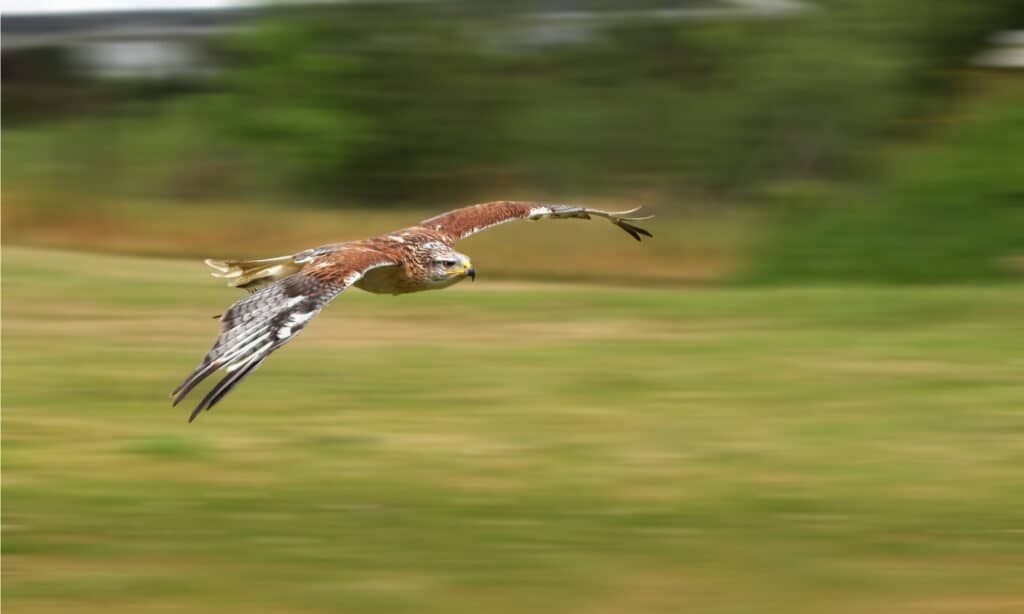
Broad-winged hawks are the smallest hawk in the family Buteo.
©pr2is/Shutterstock.com
| Scientific Name | Buteo playpterus |
| Weight | Around 1 pound |
| Length | 13-17 inches |
| Wingspan | Around 33 inches |
The broad-winged hawk is a common bird in the western hemisphere. However, you can’t find typically find it everywhere at the same time. Instead, during the warmer months, they spend their time in eastern North America, including in Texas. However, during the winter, they tend to move south to the Neotropics. This is an area that includes Central and South America, from Mexico to the southern tip of Brazil.
There are two main genera of hawks: the Buteo genus and the Accipiter genus. Out of both genera, the sharp-shinned hawk is the smallest. However, the broad-winged hawk is the smallest of the Buteo family.
There are six different subspecies of the broad-winged hawk. The northern broad-winged hawk (B. p. platypterus) is the most common in the United States. Most other subspecies are found in Central and South America.
Harris’s Hawk
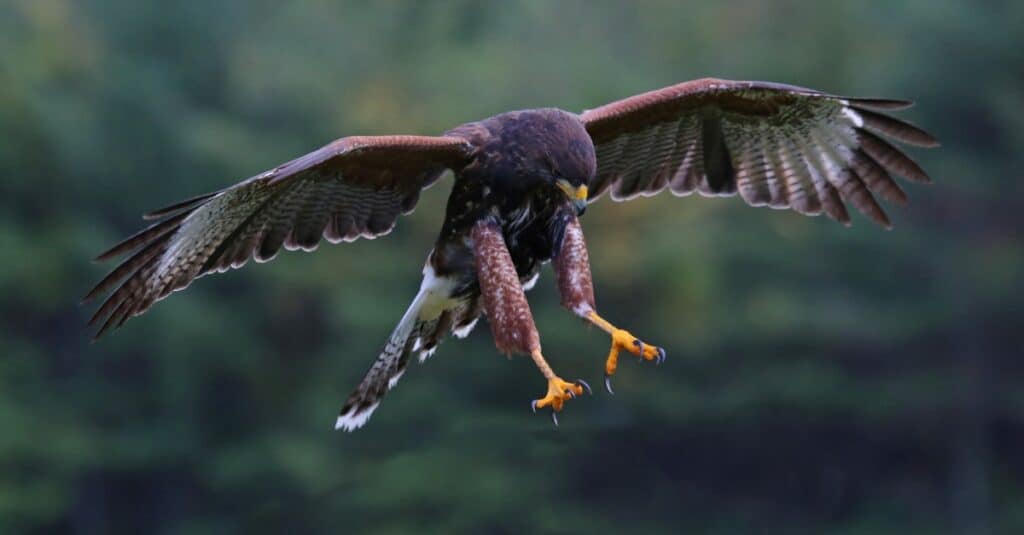
The hearing and vision of harris hawks are acute.
©iStock.com/ca2hill
| Scientific Name | Parabuteo unicinctus |
| Weight | 1.2 – 2.2 pounds |
| Length | 18 – 23 inches |
| Wingspan | 41 – 47 inches |
One of the coolest facts about Harris’s hawk is their unique hunting behavior. More specifically, their tendency to hunt in packs. That’s right. Whereas most types of hawks will hunt alone, Harris’s hawk is known for hunting in groups. Scientists think that their tolerance for each other in high-pressure situations is due to their high intelligence. This also makes them a popular hawk in falconry, which is a hunting sport in which humans train birds of prey, like many of the types of hawks in Texas, to hunt small prey.
There are three different subspecies of Harris’s hawk: P. u. harrisi, P. u. Superior, and P. u. Unicinctus. When talking about the different types of hawks in Texas or around the world, it’s good to make sure you know the scientific name because there are often various subspecies for each type of hawk. Plus, it can help prevent confusion when discussing the different common names for a species. Different birds may be called different things in different areas. For example, some other names for Harris’s hawk include
- Bay-winged hawk
- Dusky hawk
- Wolf hawk
- Peuco.
Ferruginous Hawk
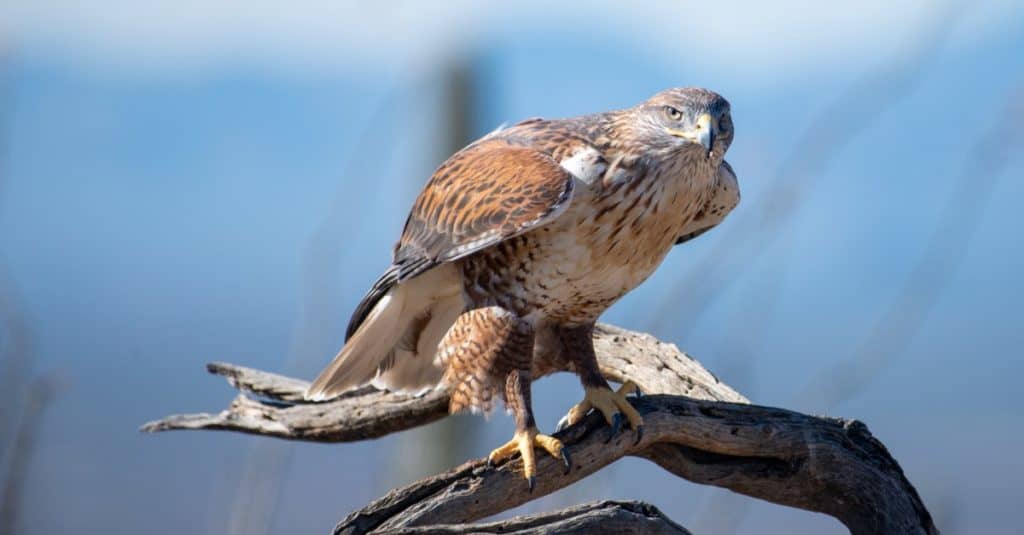
The ferruginous hawk is endangered.
©Steve Bruckmann/Shutterstock.com
| Scientific Name | Buteo regalis |
| Weight | 2 – 4.5 pounds |
| Length | 22- 27 inches |
| Wingspan | 53 – 56 inches |
The ferruginous hawk is another unique type of hawk in Texas, although for a different reason. While they don’t hunt in packs like Harris’s hawk, they do have a unique appearance. There are only three types of hawks with feathered legs, including the ferruginous hawk and the rough-legged hawk (who you can find next!).
The ferruginous hawk is much rarer than their feathered-leg cousins, however. While this partly has to do with not living in as diverse locations as other types of hawks, it also has a lot to do with their endangered status. While most types of hawks are currently enjoying a thriving population, the same cannot be said for the ferruginous hawk. Instead, scientists have estimated that there are only around 4,000 breeding pairs left in the wild.
Rough-legged Hawk
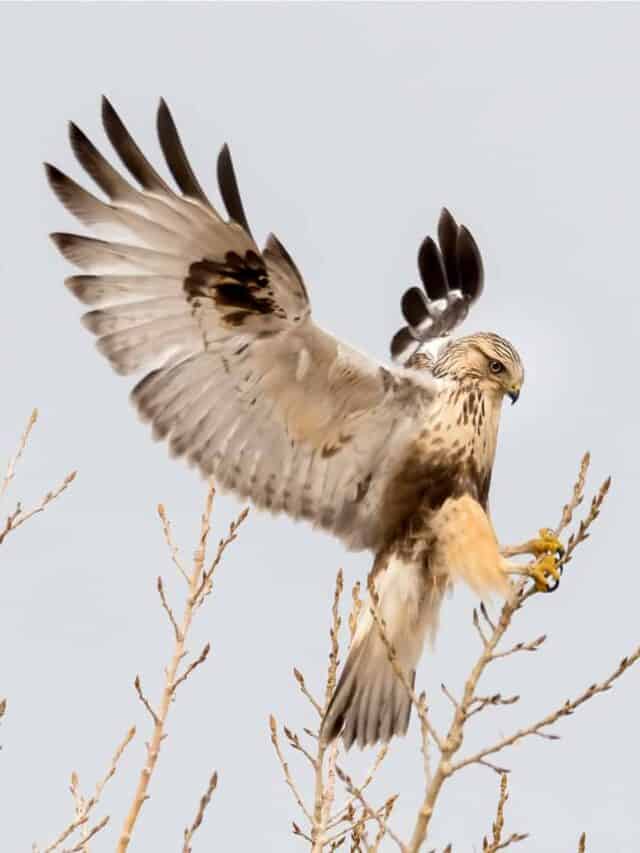
| Scientific Name | Buteo lagopus |
| Weight | 2.2 pounds |
| Length | 18 – 23 inches |
| Wingspan | 52 – 54 inches |
Next up is the rough-legged hawk! Like the ferruginous hawk, these hawks are known for their feathered legs.
For the most part, you won’t see a rough-legged hawk in Texas. Wondering why they’re on this list then? It has to do with their migratory pattern. The rough-legged hawk lives in some of the coldest areas in the world, such as the Arctic and Subarctic regions of North America, Europe, and Russia. This is where they spend the majority of their time, hunting and breeding. However, like most other hawks, they do fly south for the winter.
As a result, you’re most likely to see a rough-legged hawk in Texas during the winter. This is because, although this time of the year may be cold for us, it’s a tropical paradise for these cold-weather hawks. During the winter, you can find them scattered across the United States, as well as in some regions of Europe.
Because they’re such unique birds, you may not have any problem identifying these rare visitors. First, they sport the feathered legs that you’ll only find on ferruginous hawks and golden hawks. However, they’re also much larger than most hawks you’ll see on a day-to-day basis. This is because they need to be designed in such a way that allows them to thrive in some of the harshest conditions of the north.
You may also see them hovering. While it seems simple, hovering is actually not an ability most predatory birds possess. Outside of the rough-legged hawk, you’ll usually only find kestrels, kites, and ospreys being able to hover. This means that the rough-legged hawk can stay suspended in the air in a single spot without moving by quickly flapping its wings.
White-tailed Hawk

White tailed hawk’s diet mainly consists of rats, mice, pocket gophers, and rabbits.
©iStock.com/neil bowman
| Scientific Name | Geranoaetus albicaudatus |
| Weight | 1.9 – 2.7 pounds |
| Length | 17 – 24 inches |
| Wingspan | 46 – 56 inches |
Unlike the rough-legged hawk, the white-tailed hawk likes to call warmer regions home. A large, heavily built type of hawk, the white-tailed hawk is found in tropical and subtropical areas. While this description may not sound like Texas, there actually is a small portion of southern Texas, near the United States – Mexico border, where they are common.
The white-tailed hawk is similar in size to Swainson’s hawk and the red-tailed hawk. It is known for its unique call, which is similar to the bleating of a goat.
The photo featured at the top of this post is © iStock.com/Ondrej Prosicky
Thank you for reading! Have some feedback for us? Contact the AZ Animals editorial team.







